So you stop by the dog yard to “Help” out and Pete says, “Go put Beavis in Swing.” What the heck do you do now???
Here’s a brief primer on a dog team setup. (From someone that probably knows even less– The Webmaster :))
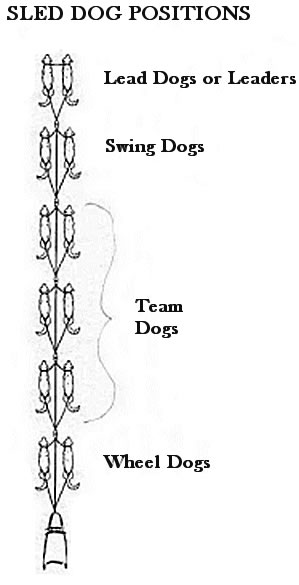
From Zuma Iditarod-
There are 4 different positions on a dog team.
Leader – Swing – Team – Wheel
A dog can rotate positions and doesn’t always stay in one place. The dogs in the front of the team are called “lead dogs”. Lead dogs are usually fast runners. They set the pace and they have to listen and follow the musher’s commands. They also have to be able to read the trail and sometimes have to make quick decisions. The musher can’t always see what’s ahead of the team so it’s the lead dogs’ job to go around danger, or stop the team. It’s a very important position on the team. Teams usually have more than 2 lead dogs and they rotate the lead dogs into the other positions. Some dogs are better on hills while others may be better on ice or crossing rivers. A musher will use the dogs that are the best or most comfortable with the trail and weather conditions.
Behind the lead dogs are the swing dogs. Swing dogs are usually lead dogs or lead dogs in training. They are responsible for swinging the team around corners.
Following the swing dogs are the team dogs. Team dogs make up most of a big dog team like the ones in the Iditarod. Any dog can run as a team dog. Many teams rotate their dogs into the team position.
Next are the Wheel dogs. Wheel dogs are placed right in front of the sled. They have the most physically demanding job and are considered the powerhouse of the dog team. Usually, but not always, Wheel dogs are the biggest and toughest dogs on the team
Now let’s talk about The Sled!
The sled is a very important part of dog sledding as well as everything else. The dog sled has many different forms but have a lot of the same features. Two runners, handle bar or drive bow, a break and some sort of basket.
The Brush Bow: Personally I think all sleds should have a bush bow to lessen the impact of a tree or bush. The bush bow is usually a bit flexible also so unlike the basket it has a big of give. I’ve had a bush bow break (when I ran into a tree), I was glad I had it so I only broke the bush bow and not my sled.
The Runners: The runners are about the hardest thing to build when building a dog sled. The pair of runners must be as close to perfectly alike. The curve in them and the length and thickness are all a key part. Getting the bend the same is usually the hardest part. When the runners are on the sled they have plastic over them to protect the wood, changing the plastic on the runner is more than a 100% easier then changing the runner it self.
The Drive Bow or The Handle Bar: There’s not much to say but the handle is the thing you hold on to for dear life. I use it to help me through my weight around when turning corners. There are different designs of handlebars but the one in the diagram above is the most common.
The Brake: The break is an extremely important part of the dog sled. While it’s not mandatory, the dogs will still pull the sled with out a break on the sled, anyone with sense wouldn’t go out with out it on. Even if one never uses the break it’s always nice to have incase you run into a moose or over flow ice.
The Foot Board: With out proper footing one cannot steer properly, break properly, peddle or stand. Unless you have awesome grip on your boots, you need some sort of foot board. Many mushers use used skidoo track cut into lengths and screwed or bolted on to the runner.The Basket: The difference between a sprint sled and a long distance sled is in the basket. A sprint sled has a very short basket, mine is 4 feet, and others are as small as 3 feet. All the basket is used for in a sprint sled is for an injured dog and maybe a minimal amount of equipment, like booties and such. A few years ago friends of mine bought a sled that they nicknamed “the limo” the basket was over nine feet. They used their “limo” for firewood hawling with their larger dogs. Most long distant sleds are 6-8 feet long. They have to be so big for the large amount of equipment like in a race like the Iditarod.
The Towline line or Gangline: The gang is how the dogs are attached to the sled. The gang line consists of the neckline, which is attached to the dog’s collar, and the tug line, which is attached to the end of the dog’s harness.
The Snubline: The snubline is a line that just drags the dog sled and has two purposes. If the musher falls off the sled the musher can attempt to grab on to the snubline or if the musher has to stop the snubline is used to tie off on a tree to restrain the team.
The Snow hook: The snow hook is used as an anchor and is put into the snow when the team stops and the musher lets off on the break the snow hook keeps the team from running away with out the musher!
The Stanchions:The Stanchions is basically the back of the sled.



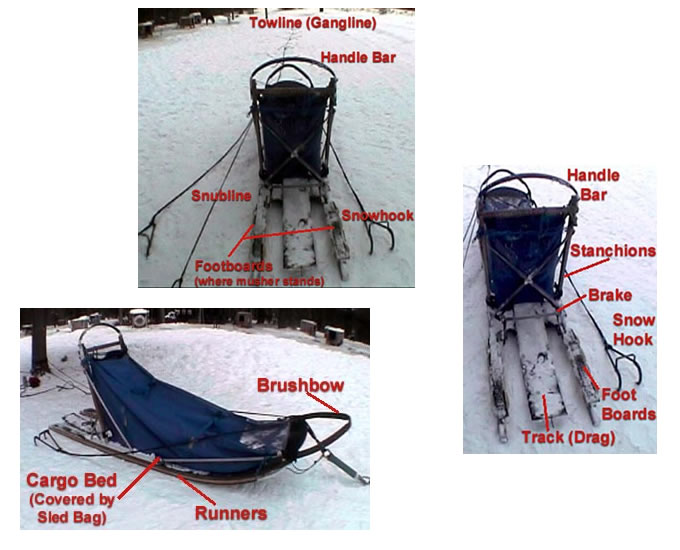








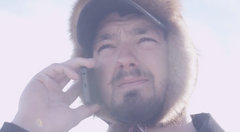




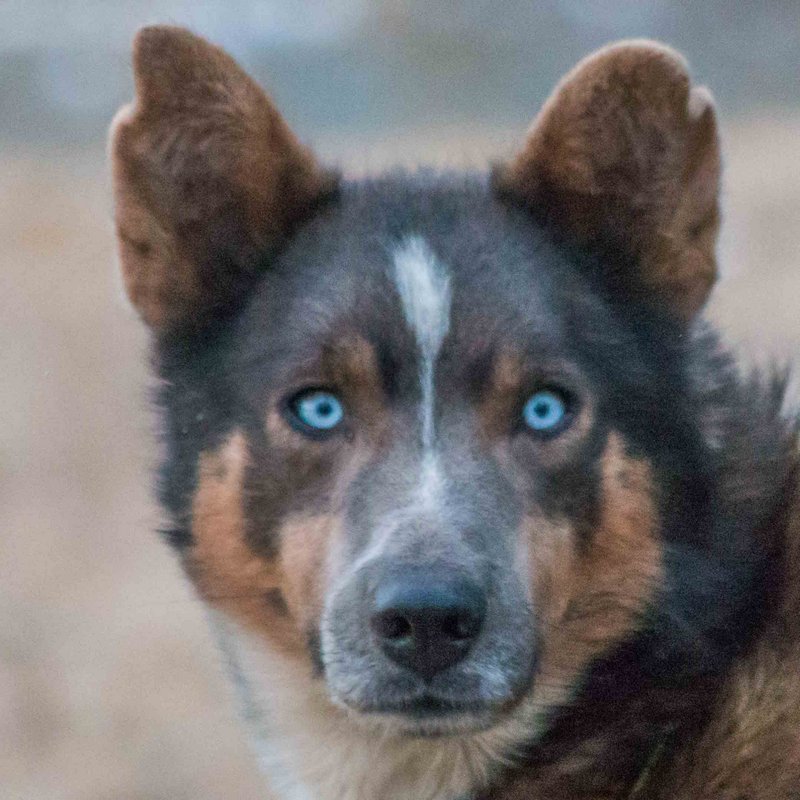
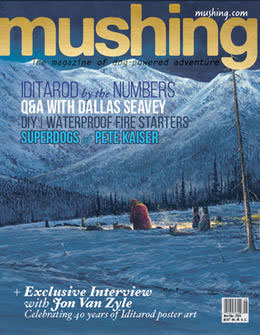
Swwwwwwwwwwwweeeeeeeetttttttt iditarod but i am from the future it is 2017
GREAT JOB BEING IN 5 TH PLACE GO PETER KAISER! AND I PCK YOU TO BE MUSHE I I,M FROM STANFORD SCHOOL….
Wow! Really cool information! Congrats on Iditarod 2012!
HI SO YOU SO COOL .WIN